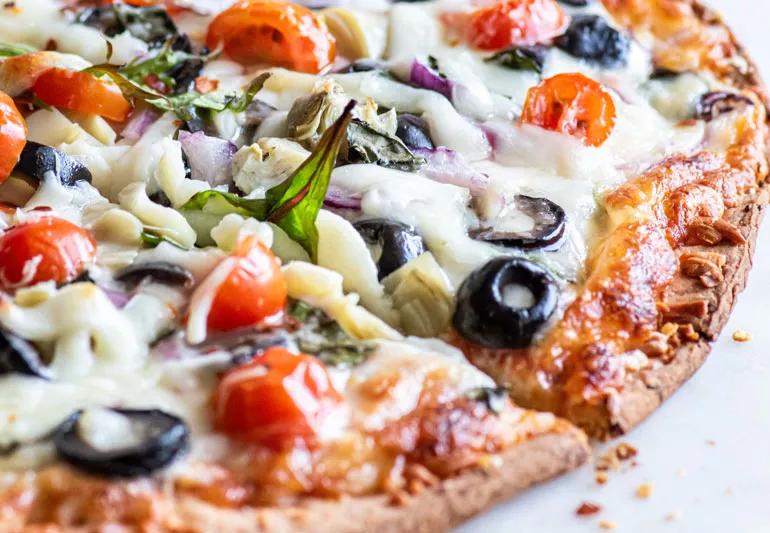A dietitian’s tips for switching it up in the kitchen

Are you a person who can eat the same thing every day and never grow tired of it? Or do you get bored on day two of leftovers?
Advertisement
Cleveland Clinic is a non-profit academic medical center. Advertising on our site helps support our mission. We do not endorse non-Cleveland Clinic products or services. Policy
If you relate most to that second description, you probably know the feeling of being in a food rut — bored with your go-to meals and lacking motivation to cook. It’s time to get creative to mix up your meal routine!
Registered dietitian Beth Czerwony, RD, shares some strategies for thinking outside the box and trying something new.
Sometimes all it takes to spark some creativity in the kitchen is a little inspiration. Browse the photos in a cookbook you haven’t opened in a while, or borrow one from your local library (when it reopens, if it hasn’t already). Social media platforms like Pinterest and Instagram are also flooded with gorgeous food photos and recipes that could be just what you need to dream up your next meal.
Push yourself to get creative by committing to a theme and finding different ways to work within it each week. For example, start doing Meatless Mondays and pledge to eat only plants one day a week. Or, make taco Tuesdays a thing and try different fillings each week.
Give your palate something new by mixing up a spice blend using what you have in your spice rack. There are also some great pre-mixed varieties you can buy at the store. Rub it on fish, poultry or veggies before you put them on the grill.
Advertisement
If you’re up for a more ambitious project, try growing a windowsill garden. Having fresh basil, cilantro, rosemary or thyme on hand can help add some flavor to your menu. If they grow faster than you can keep up with, Czerwony recommends pulsing the fresh herbs down in a food processor, placing them in an ice cube tray with some olive oil on top, and freezing them to use later.
The next time you’re at the grocery store or your local farmers market, track down a vegetable you don’t normally eat (or even know what to do with). Then search for a recipe online that contains that vegetable and, voila, you’re on your way to cooking up something new. “You just might find out that you love it,” Czerwony says.
When’s the last time you dug your slow cooker out of the cupboard? Or used that vegetable spiralizer you got for Christmas? Use what’s already in your kitchen to mix up your meals. Or, if it’s feasible, invest in a new tool that you know you’ll get a lot of use out of. Air fryers and pressure cookers are especially popular right now, and you can easily find recipes for them online. “My multi-cooker is the best gift I’ve ever gotten, because you can throw a meal in less than an hour that would normally take all day,” Czerwony says.
Standing over a hot stove or oven isn’t a mandatory step for preparing a good meal. If you’re not in the mood to cook, trying throwing together a dinner board and eating it al fresco style. We eat with our eyes first, so focus on foods that are both nutritious and colorful, including fresh fruits and veggies with hummus. “Find meats that don’t have a lot of nitrates and that aren’t overly processed,” Czerwony says. Maybe try wrapping some prosciutto around pieces of melon. If you want to include cheeses on your board, use lower-fat varieties like feta or goat, or hard cheeses like Parmesan or sharp cheddar.
For many people, pizza is a favorite indulgence. But instead of ordering a greasy pie from a chain pizza place, turn your craving into a crafty night at home. Make a homemade whole wheat crust, or buy a frozen premade thin crust at the store. Grab a jar of sauce while you’re at it (but it check for added sugar first!). Skip the processed meats and load your homemade pizzas up with fresh veggies instead. “That’s going to be a really good way to get the volume and mouth feel you want without adding a lot of calories,” Czerwony says. Sprinkle some cheese on top and pop it in the oven.
Advertisement
If all else fails and you still find yourself in a food rut, now is a great time to support your favorite independent restaurants that have been affected by the COVID-19 crisis. There are healthy ways to order takeout – and it comes with a feel-good bonus of supporting your local economy.
Advertisement
Learn more about our editorial process.
Advertisement

With a focus on internal cues for hunger and fullness, this eating style may revolutionize your relationship with food

Review the ingredients, watch for sugar and fat, and choose one with the right amount of protein for your needs

Getting the hang of portions can help you better understand how much to put on your plate

A typical recommended balanced diet is half fruits and veggies, a quarter protein and a quarter grains

Foods high in protein, fiber and water can help keep hunger at bay

This quirky food trend is harmless, as long as you’re getting enough protein, fiber and healthy fats

Learning about your relationship with food can help improve your eating behaviors and patterns

Eating mindfully, sipping water and chewing slowly can help your brain catch up with your stomach

Start having sex about 72 hours before ovulation, then at least every other day during your fertile window

Attachment theory suggests that your earliest relationships shape connections throughout your life

It isn’t a recognized mental health disorder, but research shows that problematic social media use can negatively affect your mental health, self-esteem and sleep